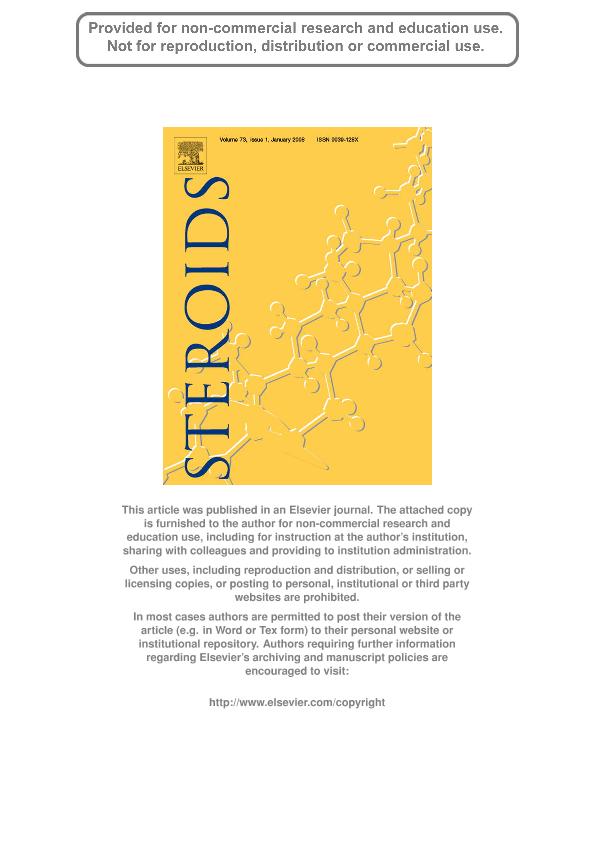Artículo
Diagnostic value of salivary cortisol in end stage renal disease
Arregger, Alejandro Luis ; Cardoso, Estela M. del Luján
; Cardoso, Estela M. del Luján ; Tumilasci, Omar Rene
; Tumilasci, Omar Rene ; Contreras, Liliana Noemí
; Contreras, Liliana Noemí
 ; Cardoso, Estela M. del Luján
; Cardoso, Estela M. del Luján ; Tumilasci, Omar Rene
; Tumilasci, Omar Rene ; Contreras, Liliana Noemí
; Contreras, Liliana Noemí
Fecha de publicación:
01/2008
Editorial:
Elsevier Science Inc
Revista:
Steroids
ISSN:
0039-128X
Idioma:
Inglés
Tipo de recurso:
Artículo publicado
Clasificación temática:
Resumen
Objectives: Salivary cortisol has been proposed a surrogate marker for free serum cortisol measurements. The aim of this study was to ascertain the diagnostic value of basal and stimulated salivary cortisol for the detection of adrenal insufficiency (AI) in hypotensive end stage renal disease (ESRD) patients. Basal salivary cortisol and basal total serum cortisol were studied in order to determine the accuracy of both biomarkers in predicting AI. Patients and methods: Twenty-nine ESRD patients with sustained hypotension were investigated for possible AI. Salivary cortisol was assessed at baseline and 30 min after 25 μg ACTH i.m. (LDTs). The dosage of salivary aldosterone was performed in salivary cortisol hypo-responders. Basal blood samples were drawn for steroids, renin and ACTH measurements. Results: A clear separation between patients with normal and impaired adrenal function was obtained through salivary cortisol levels at 30 min after ACTH. AI was detected in six cases (21%) through impaired salivary cortisol responses; stimulated salivary aldosterone helped to differentiate primary (n = 3) from secondary AI (n = 3). ROC curves showed that cutoff values for basal SAF ≤4.4 nM and serum cortisol ≤232.0 nM suggest AI (sensitivities: 93% and 69%; specificities: 86.4% and 91%, respectively). Conclusions: We conclude that ACTH stimulated SAF is an accurate biomarker for the diagnosis of AI in hypotensive ESRD patients. Neither basal salivary cortisol nor serum cortisol showed 100% sensitivities for the detection of AI.
Palabras clave:
salivary cortisol
,
renal disease
Archivos asociados
Licencia
Identificadores
Colecciones
Articulos(IDIM)
Articulos de INST.DE INVEST.MEDICAS
Articulos de INST.DE INVEST.MEDICAS
Citación
Arregger, Alejandro Luis; Cardoso, Estela M. del Luján; Tumilasci, Omar Rene; Contreras, Liliana Noemí; Diagnostic value of salivary cortisol in end stage renal disease; Elsevier Science Inc; Steroids; 73; 1; 1-2008; 77-82
Compartir
Altmétricas



